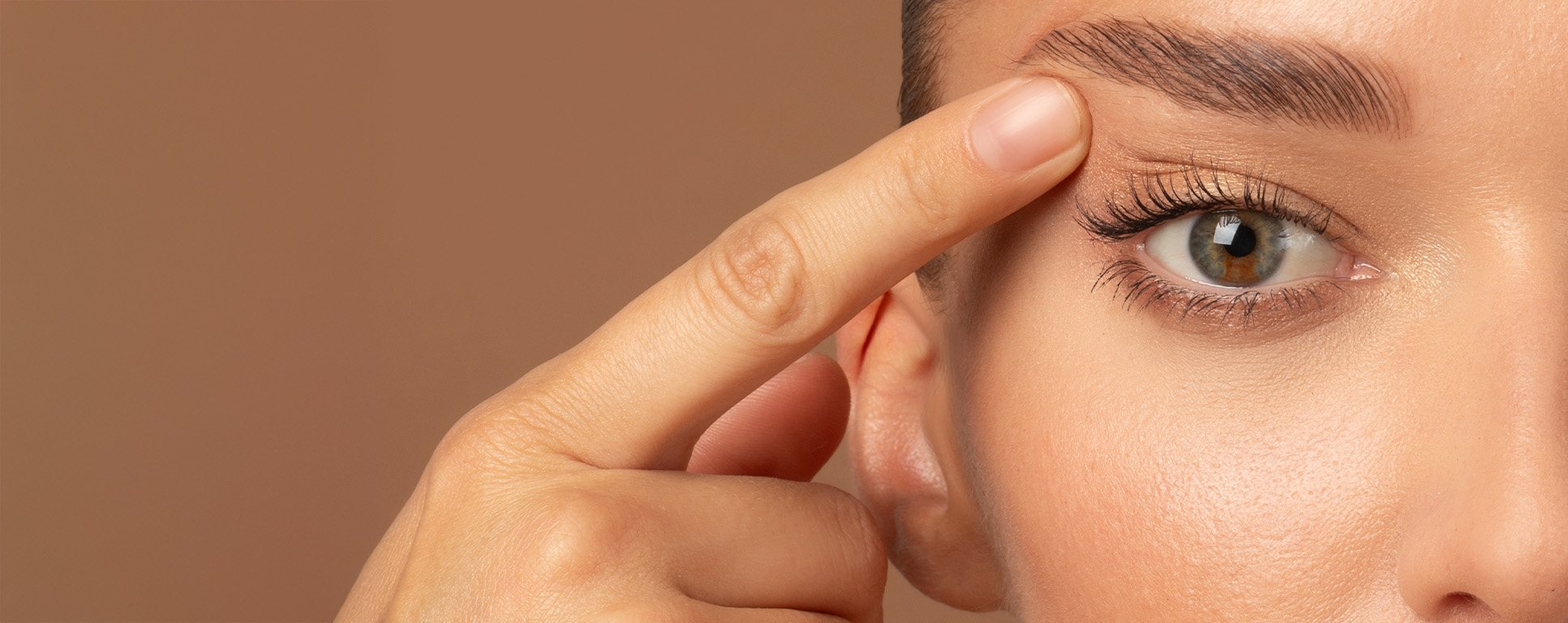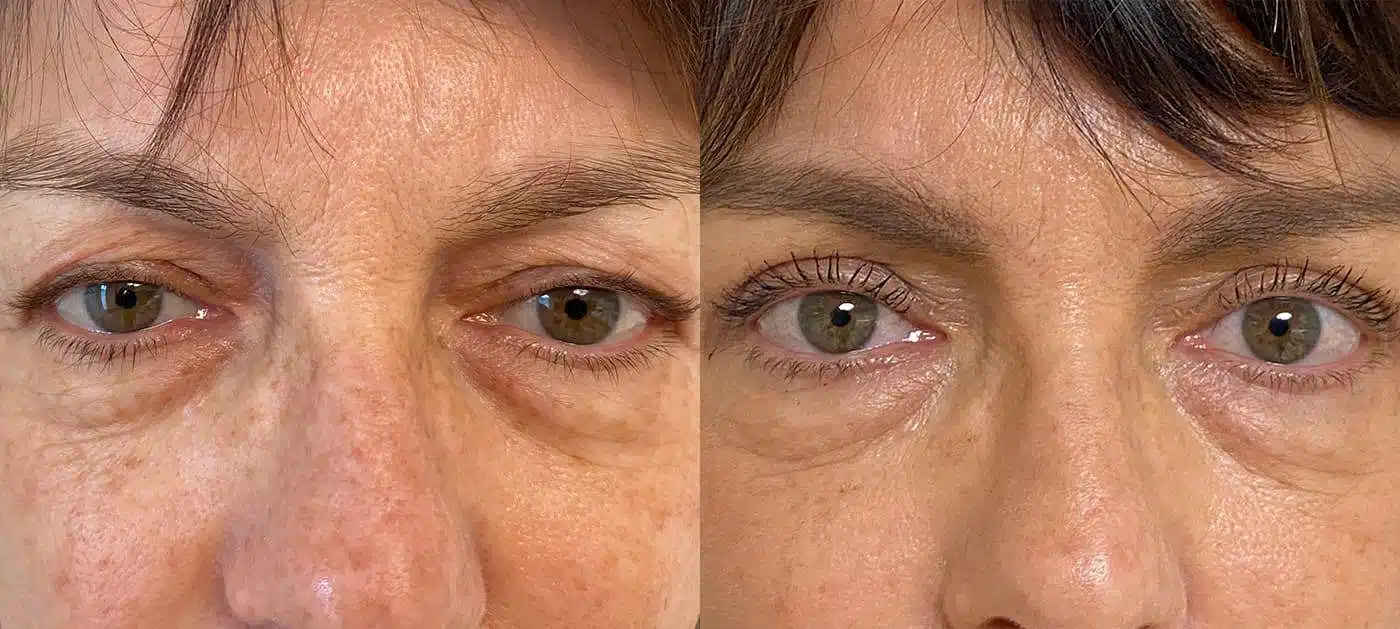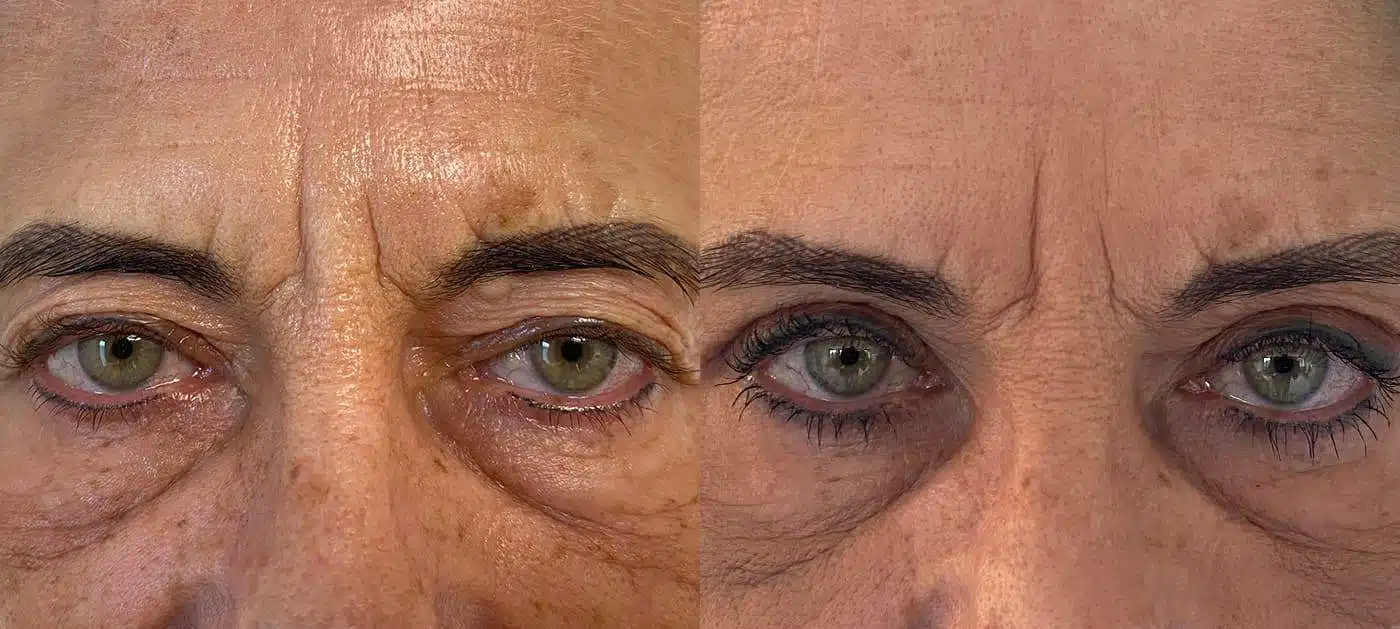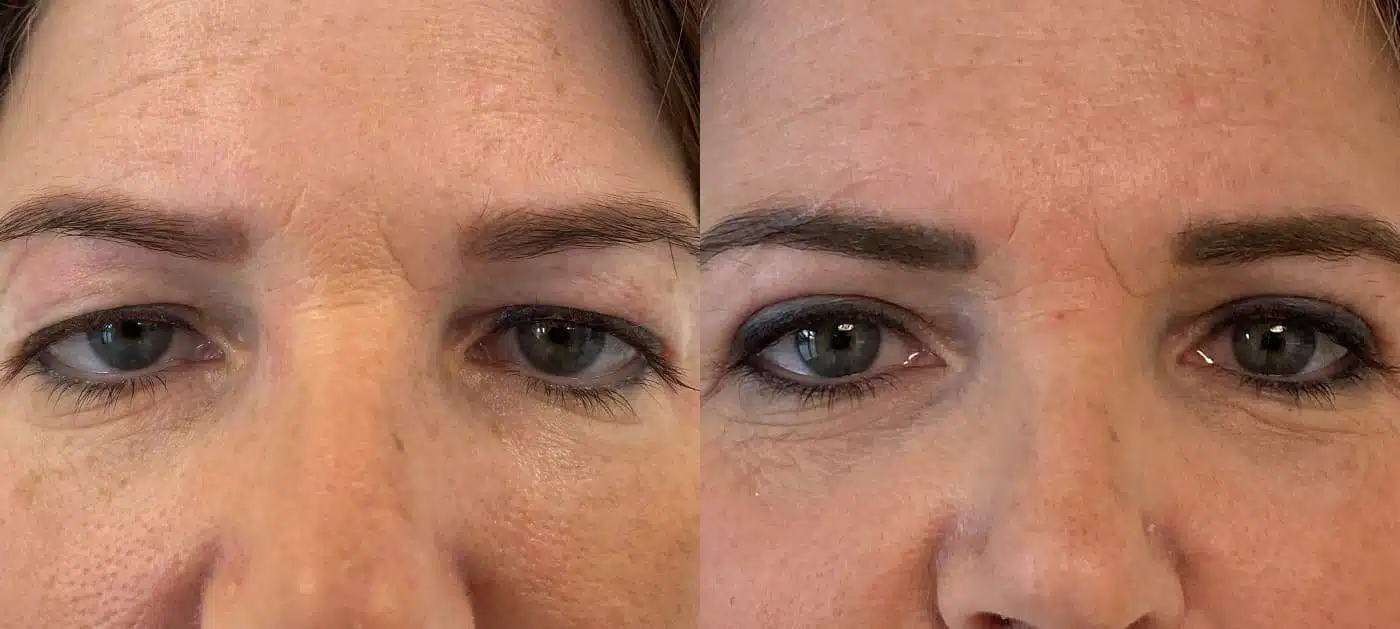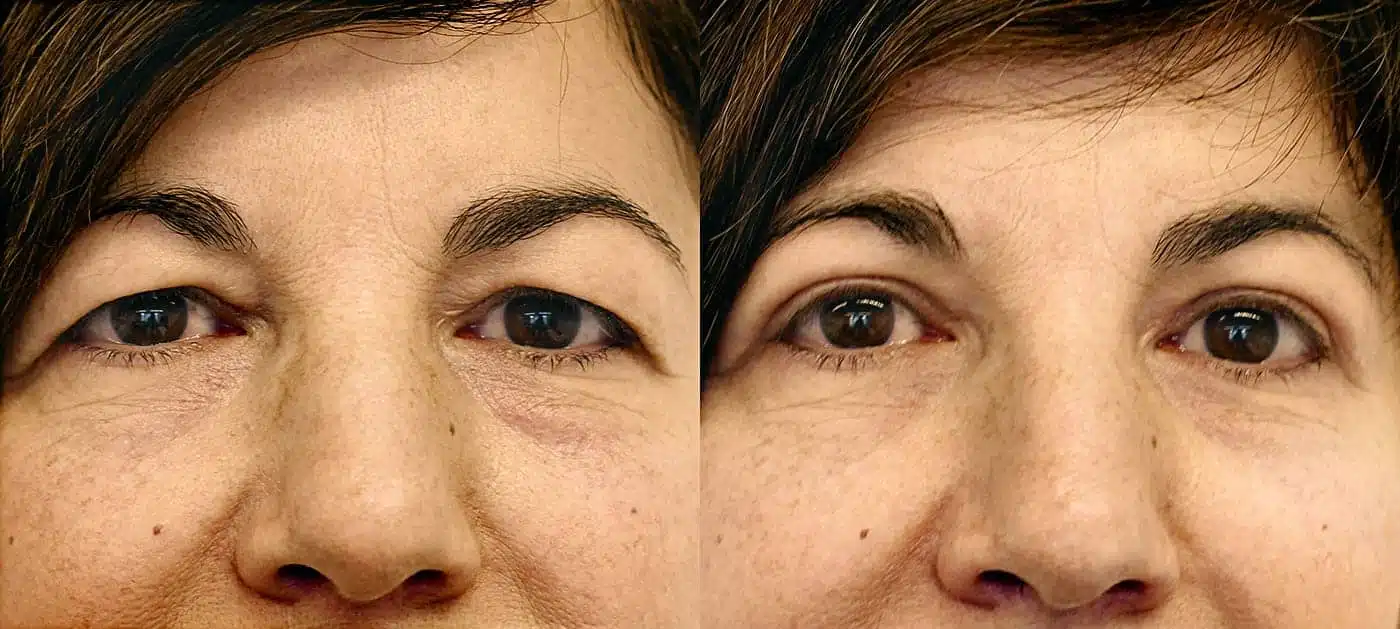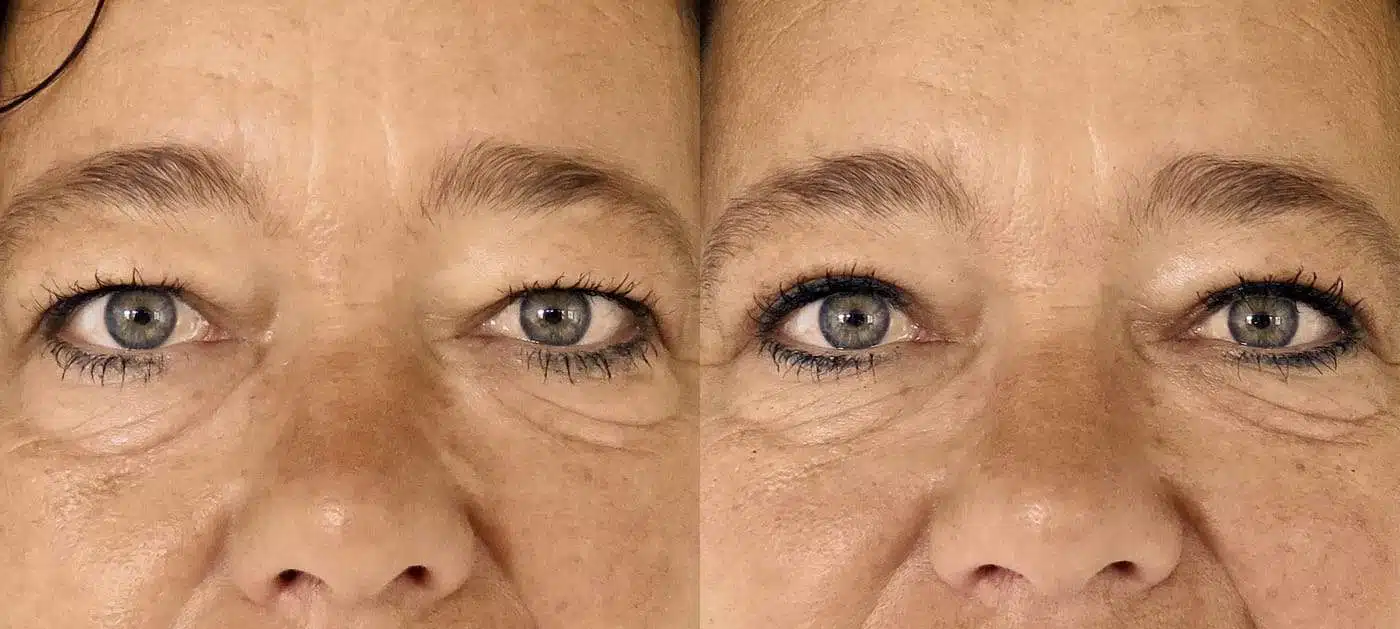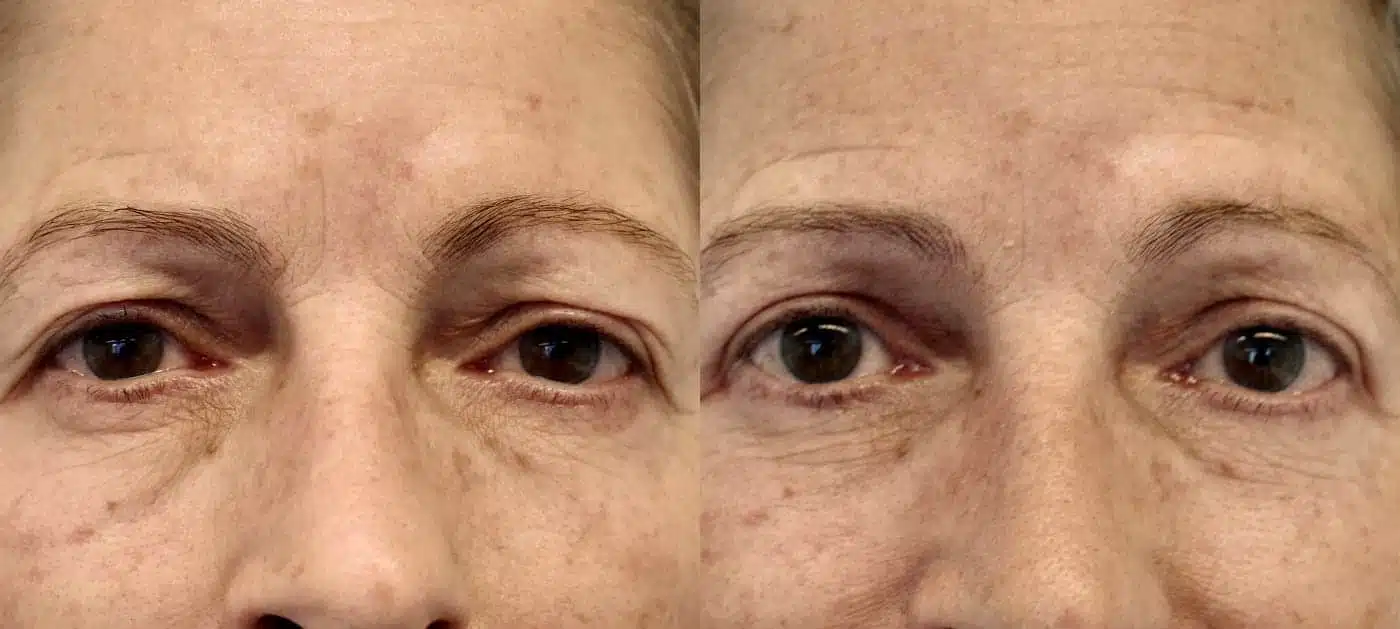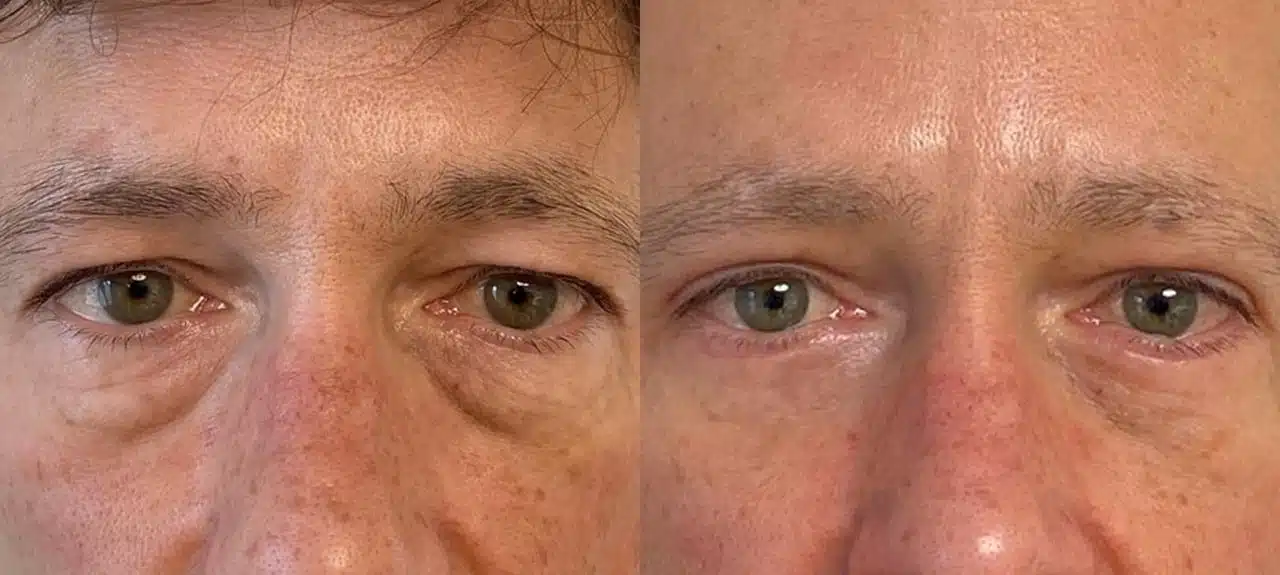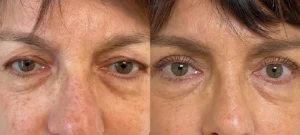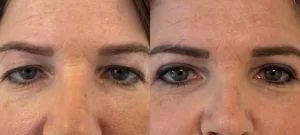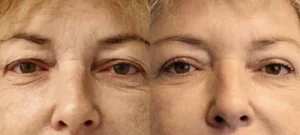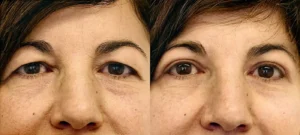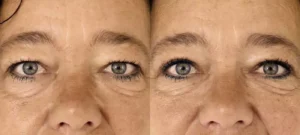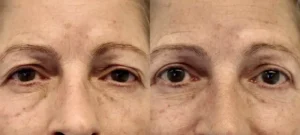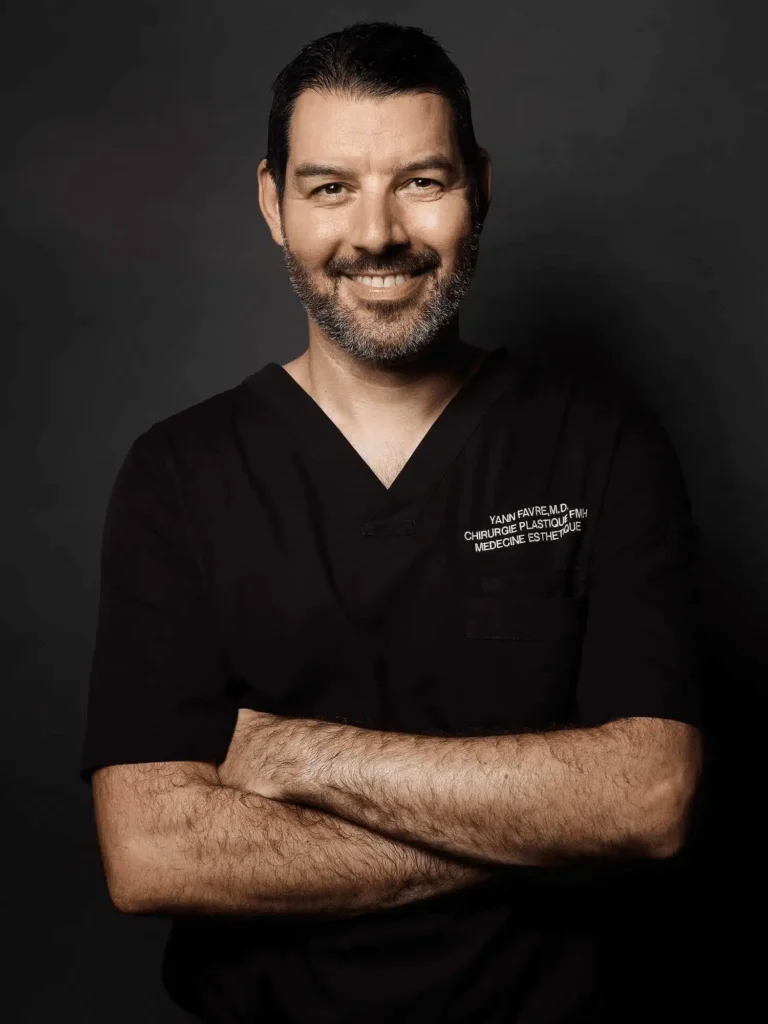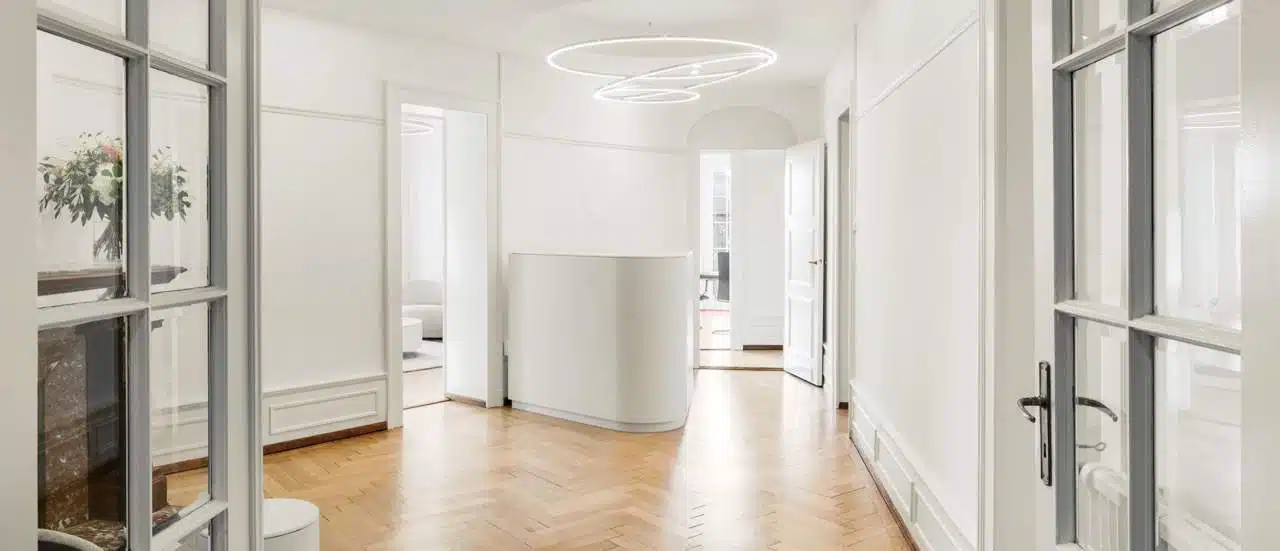Before the procedure
During the initial consultation, we make sure that upper blepharoplasty is a treatment that will meet your expectations. To this end, we clarify questions about your general state of health, measure excess skin and the presence of fat bags in the eyelids. We inform you about outpatient surgery, discuss the additional examinations required for the operation, explain the applicable forms of anesthesia and give an overview of the various stages in the healing process. To avoid jeopardizing the wound-healing process, we strongly advise you not to smoke for around 14 days before and after eyelid surgery.
During the procedure
Prior to eyelid surgery, we carefully plan and design the existing excess skin on photographic documentation of the upper eyelids. For a harmonious, natural result, the eyelids are marked in the supine position. The drawings are very important, and several checks of the drawings are carried out while lying and standing. As a rule, the procedure is performed under local anaesthetic, or if desired, under sedation or general anaesthetic. Afterwards, excess skin is precisely removed by fine work. Extremely fine, continuous stitches are used for the sutures, which sink into the skin and are therefore not visible (intracutaneous) in your blepharoplasty.
After the procedure
During the healing phase, you’ll need to wear sunglasses to avoid straining your eyes. The eye area should be cooled after the procedure with cold pack to reduce bruising and swelling. Swelling around the eyes and bruising will disappear spontaneously within 1 to 2 weeks. You should refrain from sports for 3 weeks. We also advise against wearing contact lenses. When you return home, you should use a higher, well-filled pillow and avoid creams and ointments around the eyelids for the first two weeks after the operation. The first check-up, including the removal of stitches, usually takes place 5 to 7 days after the operation. It is advisable to massage the scar with an apricot-based ointment 2 weeks after removal of the threads used in your Blepharoplasty.
Risks and side effects
If your eyes feel slightly dry immediately after surgery, this is perfectly normal. This sensation disappears after a few days. Bruising and swelling occur regularly, but generally disappear within 1 to 2 weeks. The appearance of a grain of milium is common after surgery in the area of the scars. These small nodules usually disappear within a few weeks without treatment. Infections and hematomas are very rare. If asymmetry persists after 6 months, it can be corrected.

